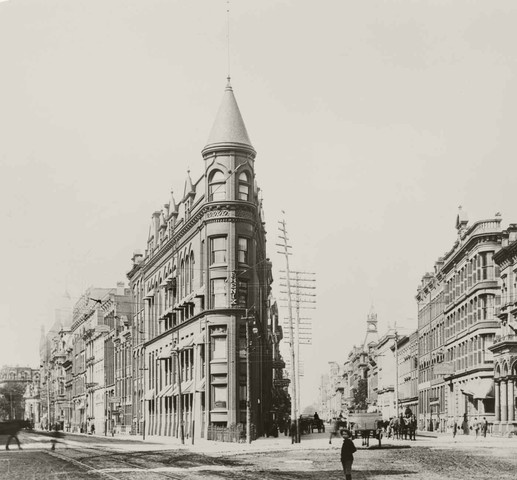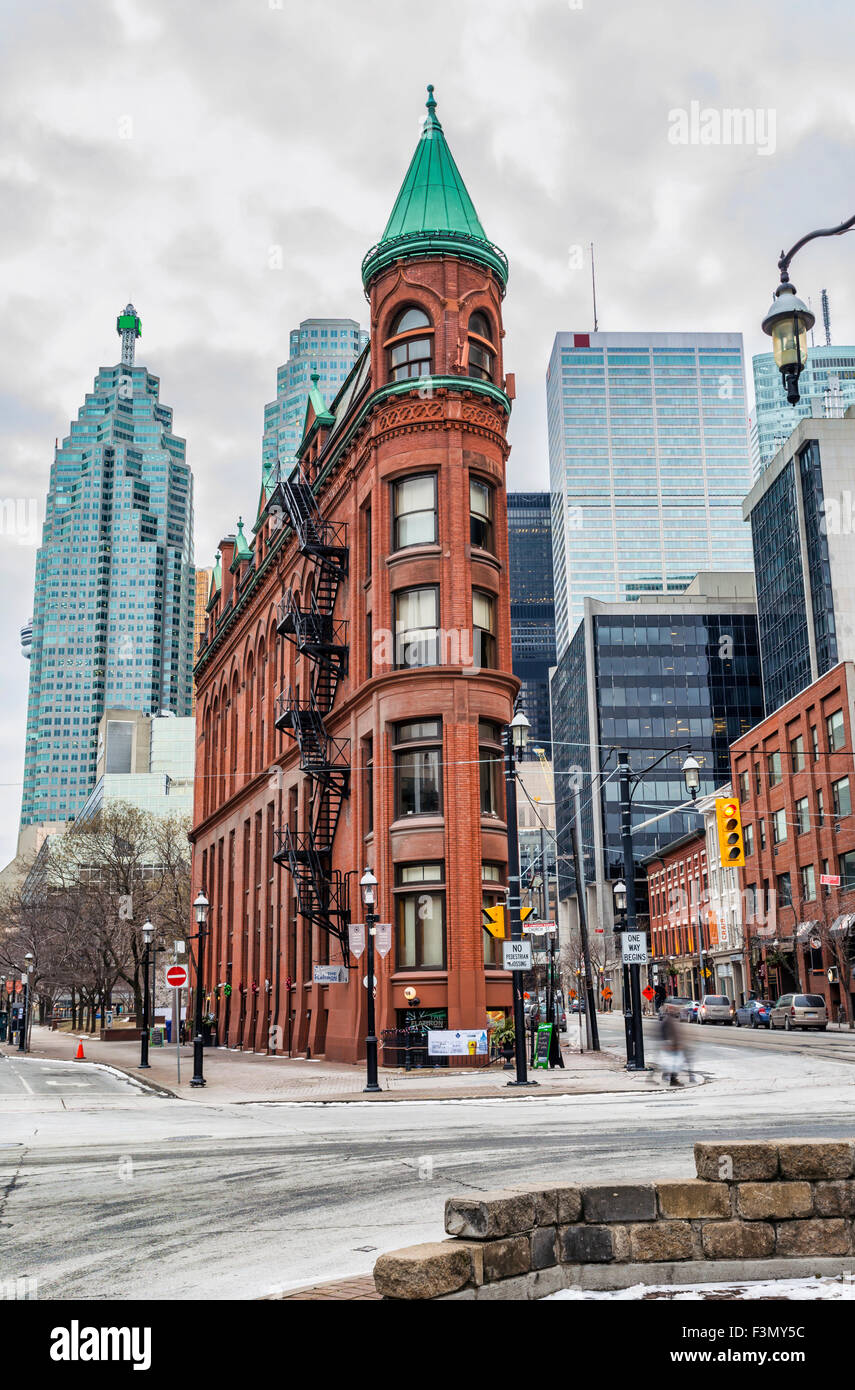Gooderham Building Parking: Find Access for This Toronto Treasure.: Seasonal Weather and Close-by Spots Can Enhance Your Trip.
Gooderham Building Parking: Find Access for This Toronto Treasure.: Seasonal Weather and Close-by Spots Can Enhance Your Trip.
Blog Article
Uncover the Rich History Behind the Gooderham Building in Toronto
The Gooderham Building, an exemplary manifestation of Richardsonian Romanesque style in Toronto, has a fabled past that prolongs past its striking red block façade. Commissioned by the significant Gooderham and Worts distillery in 1891, this structure has played a crucial function in shaping the metropolitan landscape of the St. Lawrence Market area. As we explore its origins, building value, and social impact, one can not assist however question how this spots remains to affect Toronto's identity and heritage. What tricks lie within its wall surfaces that add to its long-lasting legacy?

Origins of the Gooderham Structure
Building an enduring legacy, the Gooderham Building, likewise understood as the Flatiron Structure, became an icon of Toronto's architectural advancement in the late 19th century. The building's origins map back to 1891 when it was appointed by the Gooderham and Worts distillery, one of copyright's largest distilling firms. Made by architect David Roberts Jr. Gooderham Building address., the structure was distinctly placed at the intersection of Front and Wellington Streets, capitalizing on a triangular whole lot produced by the merging of these thoroughfares
The structure's construction made use of neighborhood red block and terracotta, developing a distinctive visual that enhanced the expanding cityscape. Originally planned to house the Gooderham and Worts offices, the structure stood for the prosperity of the distillery, which had come to be a substantial factor to Toronto's economy. Especially, the conclusion of the Gooderham Structure coincided with a duration of rapid urbanization that identified the period.
The establishment of this architectural treasure not only showcased cutting-edge style but additionally prepared for future developments in Toronto. Today, it stands as a testimony to the city's abundant history and adaptability, proceeding to draw in site visitors and admirers from around the globe.
Architectural Importance
The architectural significance of the Gooderham Structure prolongs beyond its unique flatiron shape, mirroring the innovative spirit of late 19th-century design. Finished in 1892, the framework exhibits the Richardsonian Romanesque style, characterized by its durable stonework, rounded arcs, and elaborate outlining. The vibrant use different materials, particularly the warm red block and limestone accents, improves its visual allure and demonstrates the craftsmanship of the period.
The structure's three-story design is significant for its unified proportions and classy cornice, which contribute to its famous shape against the Toronto skyline. The narrow lot on which it stands positioned unique difficulties, yet the engineers, in this instance, developed a structure that made best use of the available space while maintaining aesthetic equilibrium.
Additionally, the Gooderham Building is a testament to the adaptability of architectural layout in urban atmospheres. Its long-lasting visibility amidst modern-day growths shows the worth of protecting historic design as a way of recognizing a city's past. Today, it stays a beloved landmark, showing both the architectural trends of its time and the advancing story of Toronto as a vibrant urban facility.
Duty in Toronto's Advancement
Becoming an essential player in Toronto's city landscape, the Gooderham Building contributed considerably to the city's advancement during the late 19th century. Constructed in 1892, this legendary edifice represented not only the architectural ambitions of the moment however additionally the burgeoning economic landscape of Toronto. The building was at first created to act as a storehouse for the Gooderham and Worts distillery, which was just one of the largest distilleries in the British Realm. Its critical location at the crossway of Front and Wellington Streets facilitated the movement of goods and solutions, emphasizing the area's significance in the city's business tasks.
As the city broadened, the Gooderham Structure ended up being a vital part of the St. Lawrence Market area, which was a center of trade and business. In essence, the Gooderham Structure is not just an architectural site; it played an essential duty in shaping Toronto's identification and financial development throughout a transformative period in its history.
Social Effect and Tradition
Gooderham Structure's unique building style and historic relevance have actually left an enduring mark on Toronto's social landscape. As one of the city's most recognizable sites, its one-of-a-kind flatiron form and intricate brickwork exemplify the Victorian architectural patterns of the late 19th century. This structure not only serves as a visual support in the St. Lawrence neighborhood but likewise embodies the spirit of a growing city during an era of economic development.
The structure has actually come to be a sign of Toronto's abundant background, motivating local musicians and digital photographers that seek to catch its charm. Its presence has promoted a sense of neighborhood identity, adding to the narrative of metropolitan growth. The Gooderham Building has actually played an essential role in the tourist sector, attracting site visitors eager to discover its fabled past and architectural charm.
Along with its aesthetic appeal, the building envelops a story of resilience and adjustment, as it has transitioned through various uses over the years - Gooderham Building address. Therefore, the Gooderham Building stands not only as a monument of building relevance but also as a testimony to the progressing cultural heritage of Toronto

Repair and Conservation Initiatives
Countless restoration and preservation efforts have been taken on to ensure the Gooderham Building stays a crucial component of Toronto's building heritage. Originally finished in 1892, the building has gone through significant remodellings to resolve structural worries while keeping its historic honesty. One of the most notable repair took place in the late 20th century when the structure was meticulously reconditioned to satisfy modern-day security requirements without compromising its initial design elements.
These initiatives included repairing the unique red-brick façade, his explanation restoring the renowned triangular form, and maintaining the elaborate stonework details. Furthermore, the structure's interior has actually seen careful updates that value its historical relevance, ensuring that initial attributes such as wooden light beams and attractive moldings are kept.
The Gooderham Building is now safeguarded as a marked heritage home under the Ontario Heritage Act, which aids guard it from inappropriate changes. Neighborhood engagement has played a vital role in these preservation initiatives, with regional campaigning for teams elevating awareness regarding the structure's historical significance. Consequently, the Gooderham Building stands not only as a useful area but also as a testament to Toronto's rich building background and withstanding cultural legacy.
Conclusion

Please visit one of our local supporters - Https://therepairstore.ca/iphone-repair/
Report this page